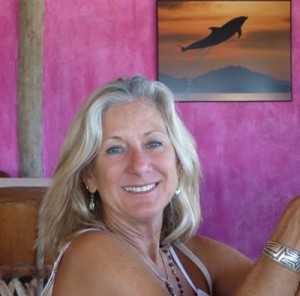
The news this week that the C02levels surpassed 400 parts per million (ppm) at the recording station on Mauna Loa, Hawaii, sent a ripple of distress through the scientific climate community. The monitoring later recanted, and said the measurement was really only 399.89 – while admitting that .11 ppm makes little difference.
The last time there was this much CO2 in the atmosphere was during the Pleistocene era, approximately 3 million years ago. It was much warmer then; Greenland was covered with forests, and the sea level was 33’ to 66’ higher. That means that most of downtown Laguna was underwater.
The significance of the 400 ppm is relational; a scant two centuries ago, the measure was 275. As a critical benchmark, tipping into the 400s is an indication that the speed in the concentration of the gas is increasing. If the current rate continues, we will reach a doubling of pre-industrial levels of CO2 within the next few decades. NASA’s James Hanson has stated, “If humanity wishes to preserve a planet similar to that on which civilization developed and to which life on Earth is adapted, … CO2 will need to be reduced … to at most 350 ppm.”
There are natural factors that contribute to C02 – volcanoes and decomposing plant materials – but the overwhelming culprit in the increase are human beings. Our addiction to fossil fuels – coal burnt for electricity and oil for gasoline – has caused the bulk of the increase.
Our love for the gasoline-fueled engine has become an unsustainable proposition. We need to adapt to alternate fuel sources, and we need to move more quickly. The United States is the second largest contributor on the planet – approximately 20% – surpassed only by China.
Laguna is a small, albeit tiny component of the United States, but our individual actions count. Our citizens pledged water conservation in a nationwide on-line challenge and were acknowledged as one of the nation’s most water-wise cities. Proof that our collective energies can make a difference.
The Environmental Sustainability Committee, of which I am a member, is tasked with exploring ways in which Laguna Beach can reduce its planetary impact in areas that include water, waste, energy, air, and ocean. Combined with council and community input, we are working toward suggesting goals and actions that will lead to policies to become part of the general plan.
Together, we need to transition from our current energy strategies to new modalities. Traffic and limited parking are two of our greatest contributors to the C02 problem. How can we create a more pedestrian friendly city, increase access to public non-polluting transportation, provide more options for cyclists, and limit the never-ending search for a parking space? Can we create more solar opportunities? Can we join with other communities in seeking wind and or sea generated power?
Our community’s collective wisdom and input are invaluable. Feel free to email me your suggestions. Thanks for taking the security and future of our home planet into your heart.
Catharine Cooper, a lifelong resident of Laguna Beach, is currently a member of the city’s Environmental Sustainability Committee. Email : [email protected]




